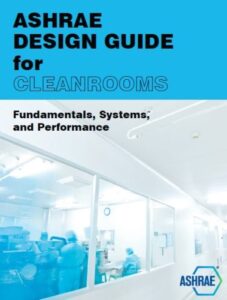ASHRAE Design Guide for Cleanrooms: Fundamentals, Systems, and Performance
ASHRAE Design Guide for Cleanrooms: Fundamentals, Systems, and Performance
ASHRAE Design Guide for Cleanrooms provides the information needed for successful cleanroom projects. Designers, builders, owners, also operators of cleanrooms will find this book an indispensable resource.
The guide begins with fundamentals such as cleanroom classification and airflow, standards and guidelines for cleanroom design, and sources of contaminants inside cleanrooms, including separate chapters on airborne particulate contaminants, surface particulate contaminants, airborne molecular contaminants, liquid-borne contaminants, and microbial contaminants.
From there, guidance proceeds to specific recommendations on design of environmental control systems, covering planning and concerns such as contamination control, site selection and services requirements, critical flow arrangements, architectural considerations, indoor environmental quality, outdoor emission control and outdoor air intake, and safety.
Additional chapters discuss electrical, control, and lighting systems, as well as using computational fluid dynamics (CFD) to assist in cleanroom design.
You can also Read Fundamentals of Heating and Cooling Loads IP Edition
Finally, dedicated chapters address cleanroom testing and certification, qualification, commissioning, and the needs of cleanrooms in specific facility types, such as semiconductor and electronics, pharmaceutical, biotechnology and health care, and food processing.
This design guide divided into four parts, each containing multiple chapters:
- Cleanroom Fundamentals
- Design and Environmental Control Systems
- Testing, Certification, Commissioning, and Qualification
- Cleanroom Design In Select Industries
Cleanrooms and associated technologies commonly used in modern microelectronics, semiconductor, pharmaceutical, biotechnology, nanotechnology, medical device, life science, aerospace, optics, automotive, health care, biosafety laboratory, and food processing industries, virtually covering all the major high-tech sectors where indoor airborne or surface-borne contaminants can adversely affect the manufacturing process or scientific research.
Cleanrooms demand much lower levels of contaminants than commercial spaces, and though non-contamination cannot be completely achieved, cleanrooms designed, operated, and controlled with ultra low concentrations of these contaminants to meet specific process requirements for indoor air cleanliness
The ASHRAE Design Guide for Cleanrooms offers a practical, comprehensive approach to cleanroom theories, fundamentals, performance, control, testing, and industrial applications.

Comments are closed.